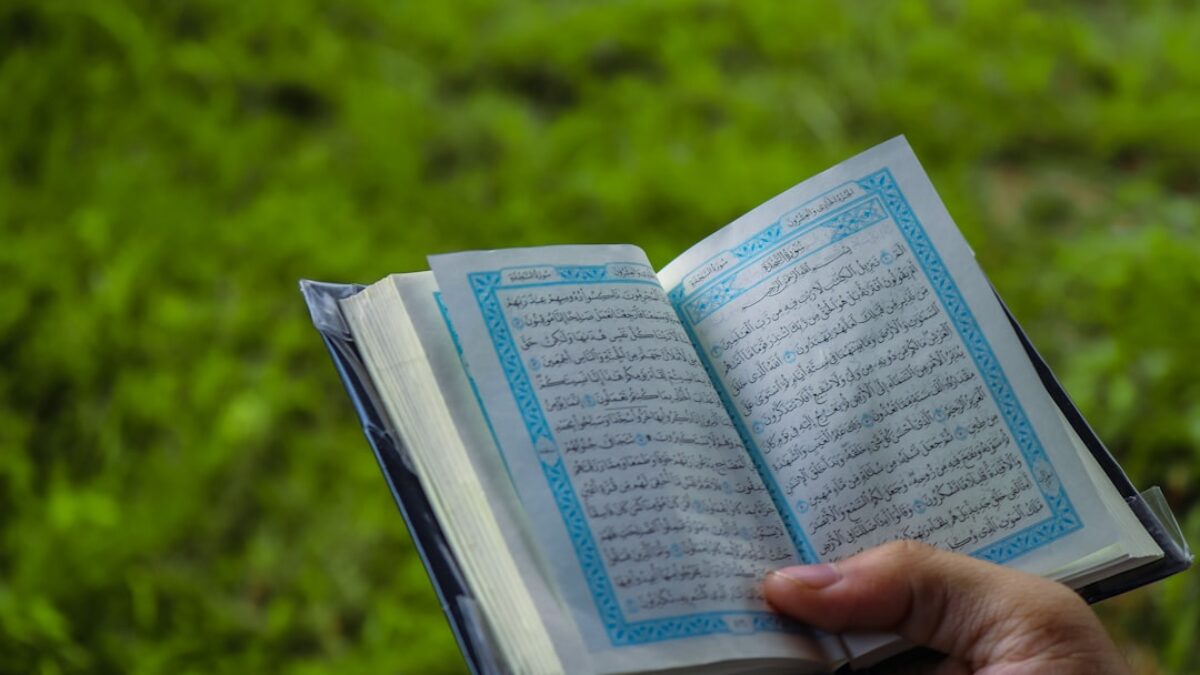The stories and teachings of the Islamic prophets form the spiritual backbone of the Qur’an, shaping the moral imagination and devotional life of more than 1.8 billion Muslims worldwide. Yet many people—both Muslims seeking deeper understanding and non-Muslims curious about Islam—struggle to locate reliable sources, interpret ancient narratives, and extract practical wisdom from the lives of prophets such as Adam, Noah, Abraham, Moses, Jesus, and Muhammad (peace be upon them all).
This guide provides a step-by-step roadmap to studying the prophets in a systematic, source-critical, and spiritually enriching way. Whether you are a weekend learner, a parent teaching children, or an educator designing a course, you will find practical tools, curated resources, and real-life examples to make the journey engaging and transformative.
Understanding the Concept of Prophethood in Islam
In Islamic theology, nubuwwah (prophethood) is not merely a historical phenomenon; it is a divinely chosen channel through which God communicates guidance to humanity. Prophets are infallible in conveying the message, possess luminous character, and model perfect submission to the One God (Allah). The Qur’an mentions 25 prophets by name, while Hadith literature expands that number to 124,000 throughout human history.
Theological Foundations
- Risalah (Message): Every prophet delivered the same core message—monotheism, accountability, and ethical living.
- Ismah (Infallibility): Prophets are protected from error when relaying divine revelation.
- Miracles (Muʿjizāt): Supernatural signs confirming their authenticity, tailored to their communities’ expertise (e.g., Moses’ staff, Jesus’ healing).
Typology of Prophets
| Type | Definition | Examples | Key Feature |
|---|---|---|---|
| Nabī | Prophet who receives revelation but may not establish new law | Jonah, Lot | Preaches within existing legal dispensation |
| Rasūl | Messenger who brings a new scripture or law | Muhammad, Moses, Jesus | Establishes canonical text |
| Ulū al-ʿAzm | Possessors of steadfast resolve | Noah, Abraham, Moses, Jesus, Muhammad | Led major communities through adversity |
Key Components of Learning About Islamic Prophets
To master the stories and teachings of the prophets, you need a framework that balances textual study, historical context, and spiritual reflection. Below are four essential components.
1. Canonical Sources
- The Qur’an – primary, verbatim word of God; contains 93 chapters with prophet narratives.
- Sahih Hadith – authenticated reports (Bukhari, Muslim) providing supplementary details.
- Qisas al-Anbiyāʾ – classical story collections by scholars like Ibn Kathīr and al-Thaʿlabī.
- Early Tafsīr (Exegesis) – works such as Tafsīr al-Ṭabarī and Tafsīr Ibn Kathīr that contextualize verses.
Practical Tip: Source Checklist
- Ensure Qur’anic verses are cross-referenced with riwāyāt (recitations) and tafsīr.
- Verify Hadith chains using ʿilm al-rijāl (biographical evaluation of narrators).
- Compare classical and modern commentaries to detect cultural bias.
2. Historical and Archeological Context
Understanding the socio-political realities of ancient Sumer, Egypt, and Levant helps demystify certain miracles and legal rulings. Resources include:
- British Museum’s Mesopotamia Gallery – artifacts of the flood era.
- Oriental Institute Publications – on the Hyksos period relevant to Joseph’s story.
- Google Earth’s Ancient Civilizations layer – visualize trade routes of Abraham.
3. Pedagogical Tactics
| Technique | Target Age / Level | Example | Learning Outcome |
|---|---|---|---|
| Story Mapping | 7-12 years | Create a timeline of Prophet Sulayman’s kingdom using colored cards | Chronological literacy |
| Role-play Debates | Teens | Re-enact Abraham’s dialogue with Nimrod | Critical thinking & empathy |
| Manuscript Analysis | University | Compare Qur’anic calligraphy variants of the Moses narrative | Textual criticism |
4. Spiritual Reflection Models
The Islamic tradition encourages ‘ibrah (deriving moral lessons). Use the P.A.T.H. method:
- Pause – recite the story slowly.
- Ask – “What divine attribute is displayed?”
- Turn – relate the prophet’s attitude to your own struggle.
- Hope – articulate a personal duʿāʾ inspired by the story.
Benefits and Importance of Studying the Prophets
Spiritual Advantages
- Strengthening Tawḥīd: Each prophet’s life is a case study of absolute reliance on Allah.
- Developing Ṣabr (patience): Reflecting on Job’s trials transforms personal setbacks into growth.
- Cultivating Compassion: Jonah’s repentance teaches empathy for all creatures.
Intellectual Advantages
- Interdisciplinary Insight: Merging theology, history, and archaeology builds critical analysis.
- Cross-Cultural Literacy: Prophets connect Jewish, Christian, and Islamic narratives, fostering dialogue.
Social Advantages
- Ethical Leadership: Joseph’s administrative reform in Egypt offers models for anti-corruption.
- Family Resilience: Luqmā’s parenting advice (Qur’an 31) strengthens inter-generational bonds.
Practical Applications: A 30-Day Learning Roadmap
Follow this four-week plan to move from curiosity to confident mastery.
Week 1: Foundation
- Day 1: Read Sūrat al-Fātiḥah and Sūrat al-Baqarah 30-39 (Adam narrative).
- Day 2: Watch Omar Series (Episodes 1-2) for cinematic context.
- Day 3: Map Adam’s descendants using Geni.com.
- Day 4: Memorize Qur’anic duʿāʾ of Adam (Qur’an 7:23).
- Day 5: Journal reflection: “Where did I experience a ‘fall’ this year?”
- Day 6: Attend Friday sermon (khuṭbah) on repentance.
- Day 7: Quiz yourself with Qur’an.com interactive flashcards.
Week 2: Deep Dive into Abrahamic Lineage
- Study Sūrat al-Anʿām (entire chapter) with Tafsīr al-Jalālayn.
- Create a family tree of Abraham, Sarah, Hagar, Ishmael, and Isaac.
- Conduct a Hajj simulation with children using Lego or Minecraft.
Week 3: Moses Intensive
- Read Sūrat al-Qaṣaṣ (Chapter 28) and annotate using Notion Bible-Qur’an parallels.
- Watch “Patterns of Evidence: Exodus” documentary for archeological perspectives.
- Organize a community iftār (fast-breaking) themed “From Exodus to Exodus: Moses & Refugees.”
Week 4: Jesus & Muhammad – Closing the Circle
- Compare Infancy Gospels with Qur’anic accounts of Jesus’ birth (Maryam 19).
- Attend a local interfaith dialogue on “Isa (Jesus) in Islam & Christianity.”
- Conclude with 10 days of Ṣalawāt on Prophet Muhammad to integrate love and obedience.
Case Study: Teaching Prophet Yusuf (Joseph) to a Teenage Audience
Scenario
A weekend Islamic school in Toronto wants to address youth identity and moral challenges using Sūrat Yūsuf.
Step-by-Step Implementation
- Hook – open with Netflix clip “The Prince of Egypt” (dream sequence).
- Contextualize – use Google Earth to walk through Canaan-to-Egypt caravan route.
- Skill Drill – teach teens to create mind-maps of Yusuf’s character traits.
- Ethics Debate – “Is hiding your identity to prevent harm (Yusuf in Aziz’s house) ever justified?”
- Creative Assessment – produce 60-second TikTok duʿāʿ mash-ups using verses 12:101-102.
- Reflection Circle – ask each student to share one ‘ibrah they will apply in daily life.
Frequently Asked Questions
What is the difference between a Nabi and a Rasul?
A Nabī is a prophet who receives divine revelation but may not necessarily establish a new legal code. A Rasūl, or messenger, is sent to a specific community with a new scripture or law. All messengers are prophets, but not all prophets are messengers. For example, Jonah (Yūnus) is considered a Nabī, whereas Moses (Mūsā) is both a Nabī and a Rasūl because he brought the Torah.
Are the Islamic narratives of prophets identical to those in the Bible?
They share core characters and events, but differ in details and theological emphasis. The Qur’an corrects perceived distortions (taḥrīf) in earlier scriptures, such as exonerating prophets from major sins (e.g., Abraham did not lie about Sarah being his sister). The Qur’anic accounts are generally shorter, focusing on moral lessons rather than genealogies.
How can non-Arabic speakers access authentic sources?
Start with reliable English translations such as Sahih International for the Qur’an and Darussalam’s Summarized Sahih al-Bukhari. Supplement with bilingual commentaries like Tafsir Ibn Kathir (abridged English). Join online study circles on Bayyinah TV or Yaqeen Institute that provide linguistic insights without requiring Arabic fluency.
Is it permissible to use movies and cartoons for teaching children?
Yes, within guidelines. Ensure content is free from visual
























Post Comment